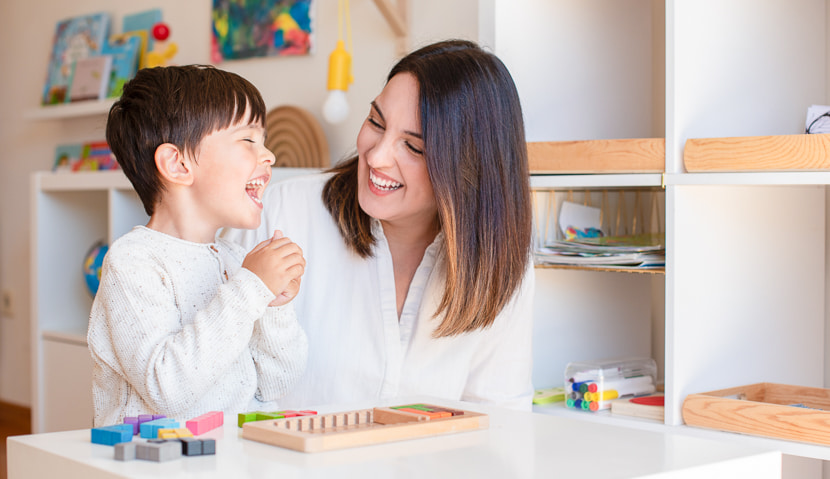
There is nothing more heart-warming than hearing children in the middle of a wildly imaginative game, playing sweetly with their toys. However, the cluttered aftermath isn’t always so heart-warming, as any parent who has ever stepped on a piece of Lego can confirm.
With busy work and school commitments, after-school activities or social engagements, cleaning up the kids’ toys is often a quick job done by tired moms and dads at the end of the day. But what if you could teach your kids the important life lesson of tidying up in an enjoyable way and make the habit stick? Read on for a comprehensive toy space guide that takes influence from Montessori, Waldorf and other educational philosophies to promote easier tidying up with kids!
It goes without saying that a cluttered room is harder to clean. Toys and books scattered on the floor can prevent proper cleaning and allow dust and mold to appear – especially during the humid Japanese rainy season. Many schools of thought such as Montessori and Waldorf focus on room layout and ambiance to engage the child, keep a sense of cleanliness and calm and encourage tidiness.
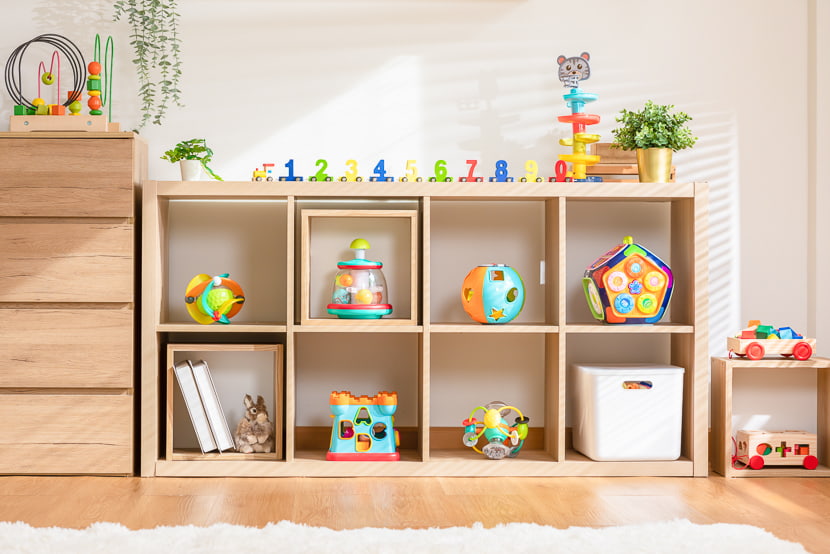
All educational philosophies, from Montessori to Reggio to Waldorf, focus firstly on room design as a tool for aiding children’s play and tidy-up. Waldorf and Reggio emphasize the need for neutral tones, natural lighting and furniture made of natural materials to promote calmness and creativity. Montessori rooms make use of wide and open shelves placed at child eye level. A few toys or activities are placed sparingly on these shelves, which promotes better engagement and encourages tidiness, rather than an overcrowded toy box which can be overwhelming for children and promote clutter.
Montessori-style shelves have several benefits:
Place toys on easy-to-carry trays or in small baskets to naturally encourage children to return them after use.
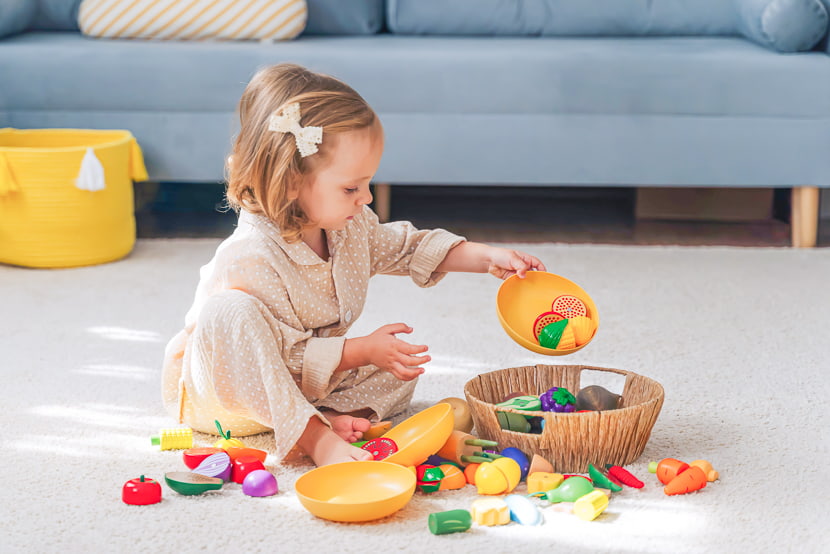
Keeping the toy space clean and hygienic is a must in a country where mold and invading insects can be a common problem. The Reggio educational approach notes the importance of a clean space to spark children’s creativity. Arrange shelves and furniture in a way to avoid gaps where dust can easily accumulate. Under the bed is a notorious place for dust to gather, so invest in some under-bed storage for any extra toys not out on display. Cable boxes can be used to smarten up loose cables for a cleaner, safer look and easier dusting.
With birthdays, Christmases and countless outings, it becomes easy for kids’ toy collections to grow out of control, with plushies and miscellaneous plastic figures galore. The Waldorf philosophy encourages simplicity and minimalism for calm and responsible children. There are plenty of second-hand shops in Japan which will accept pre-loved toys, as well as some children’s shelters and NPO charities, so it may be worth sorting through any unused toys or games that the kids have grown out of. Get the children involved in deciding which toys should be kept and which can go to give them an important lesson in charitable giving and a chance to make another child’s day with their old toys.
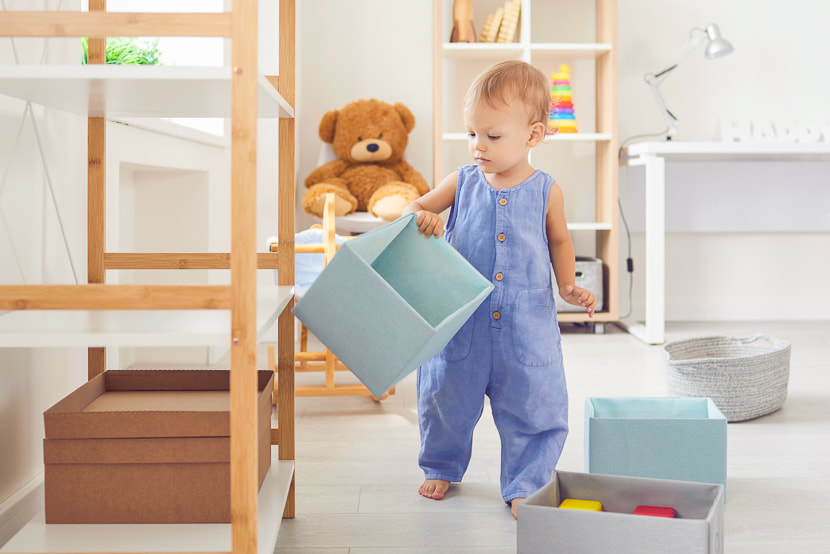
Now that you have set up a minimalist toy space, use it well by following these tips:
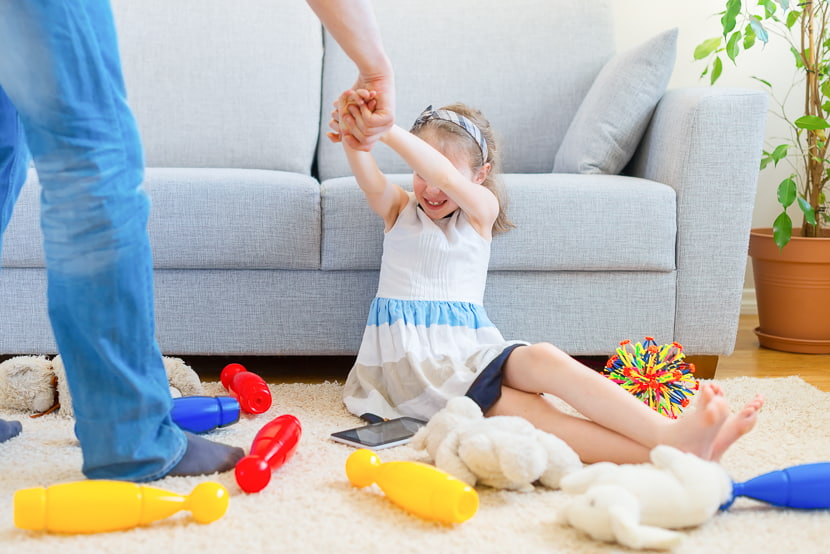
Creating a beautiful, minimalistic toy space can inspire your very own inner child to enjoy the magic of play. Take the time to make memories with your children in your new home toy space and leave the cleaning to Kurashinity. Our English-speaking housekeepers all go through rigorous Japanese hospitality training to the highest standards. Kurashinity housekeepers will keep your kids’ toy space, as well as the rest of your home sparkling clean, while you enjoy precious family life with your children.

Originally from the United Kingdom, Jessica is a writer and translator now living happily by the sea just south of Tokyo in Kamakura, Japan.